
The Basics:
- “Echino” – Spiny, “Derm” – Skin
- Many have spiny skin (i.e. sea urchins, or the internal skeleton of sea stars) but many do not.
- Appeared between 541-488 Million Years Ago (Cambrian Explosion – same as chordates)
- Coelomates with deuterostome development.
- Most closely related phylum to chordates!

A. Evolution of Body Plan
1. Deuterostome development
-
- During embryonic development the blastopore develops into the anus.
- Largest group of deuterostomes outside of Chordates
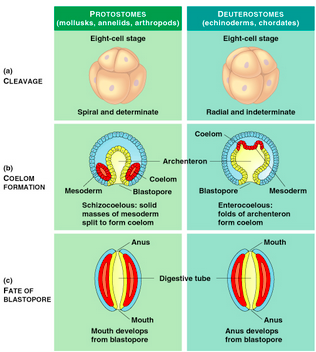
2. Water Vascular System
- Unique system of fluid-filled canals and tubes that help with feeding, movement and respiration.
- Only found in echinoderms.
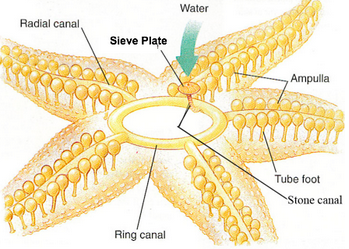
Major Parts of the water vascular system:
- Tube Feet – Have a ampullae a “balloon” that fills with water causing the foot with a suction cup to extend and stick to prey/ground.
- Sieve Plate – The entrance for water into the water vascular system (also called a madreporite).
- Ring Canal – Central canal where all canals branch from.
3. Endoskeleton – Always covered in a thin layer of skin therefore it is a endoskeleton (like us!)
- Made of calcium carbonate
- Can be loosely connected for movement (sea stars)
- Fused to form a rigid skeleton (sea urchins)
4. Radial Symmetry – Symmetry around a central axis. In echinoderms they have 5 symmetrical sections (pentaradial symmetry)

Important Note:
It is important to note that echinoderms developed from a bilateral ancestor and developed radial symmetry secondary.
- We can see this in their larval stages which are all bilaterally symmetrical!

B. Feeding and Excretion
One-Way digestive system
- Typically have two stomachs – a cardiac stomach which can be moved outside of the body begin digestion and a pyloric stomach.
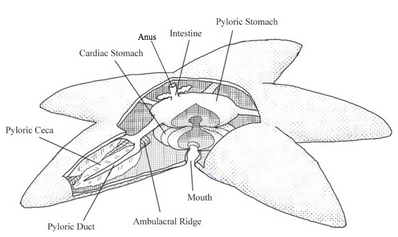
Due to this, sea stars can digest prey much larger than their stomach since they begin digestion outside their body.
- Powerful enzymes liquify prey – digested completely within the stomachs.

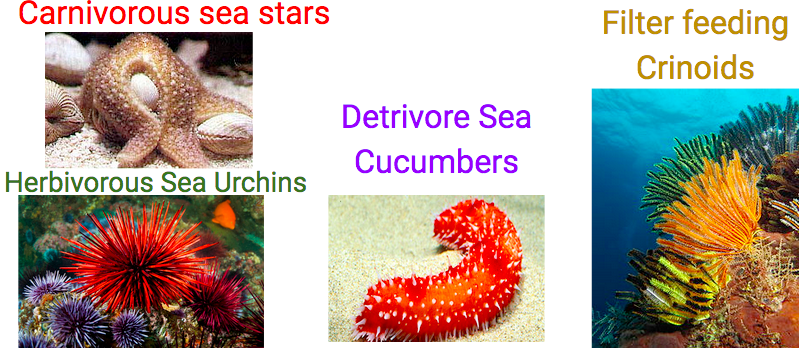
Excretion:
- Digestive waste exits the anus on opposite side of mouth.
- No distinct excretory organs – nitrogenous waste is removed from the water vascular system via diffusion through tube feet or with digestive waste.
C. Respiration and Circulation
Respiration:
- Use water vascular system in respiration and circulation.
- Gas exchange occurs through simple gills and diffusion through tube feet.
Circulation:
- Reduced circulatory system.
- All fluids and “blood” circle throughout the hydraulic-like water vascular system. Blood has no pigment (i.e. no colour)
- No heart!
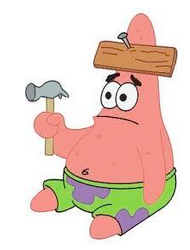
D. Reproduction
Sexual Reproduction:
- Male and female are separate individuals.
- External fertilization through broadcast spawning
- Females can release up to 100 million eggs at one time.
Sexual Reproduction – brief life cycle:
- Fertilized embryo develops into bilateral, planktonic larvae.
The planktonic larvae gradually change into radially symmetrical adults under the course of two-months and settle on the ocean floor.
Asexual reproduction:
- Asexual reproduction through fragmentation or fission (rare)
- Due to repetition of organs in each area and a nerve disk, echinoderms can regenerate if they are fragmented with a piece of their central disk.
E. Major Groups of Echinoderms
Class Asteroidea (Sea Stars)
- Predatory
- Two-stomachs (pyloric and cardiac)
- 5 or more arms that are wide near the central disk and gradually get thinner.
Class Opiuroidea (Brittle Stars)
- 5 or more thin, flexible arms.
- Many are filter feeders.
- All organs in central disk – not in arms
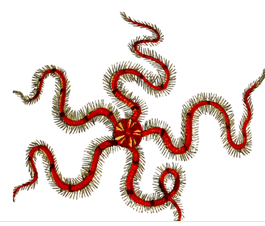
Class Echinoidea (Sea Urchins)
- Round body covered in spines
- Hard, fused endoskeleton
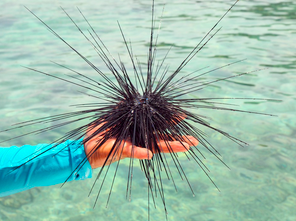
Class Holothuroidea (Sea Cucumbers)
-
- Appear bilaterally symmetrical, although they are still radially symmetrical (dorsal-ventrally stretched).
- Tube shaped detritivores.
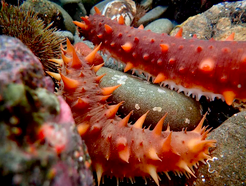
Class Crinoidea (Crinoids – feather stars)
- Cup-shaped body with many feathery arms.
- Filter feeders
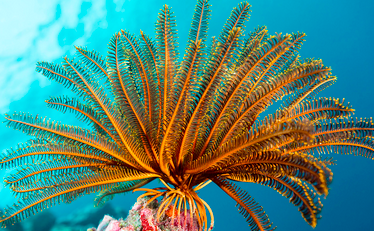
Comments by shaun pletsch